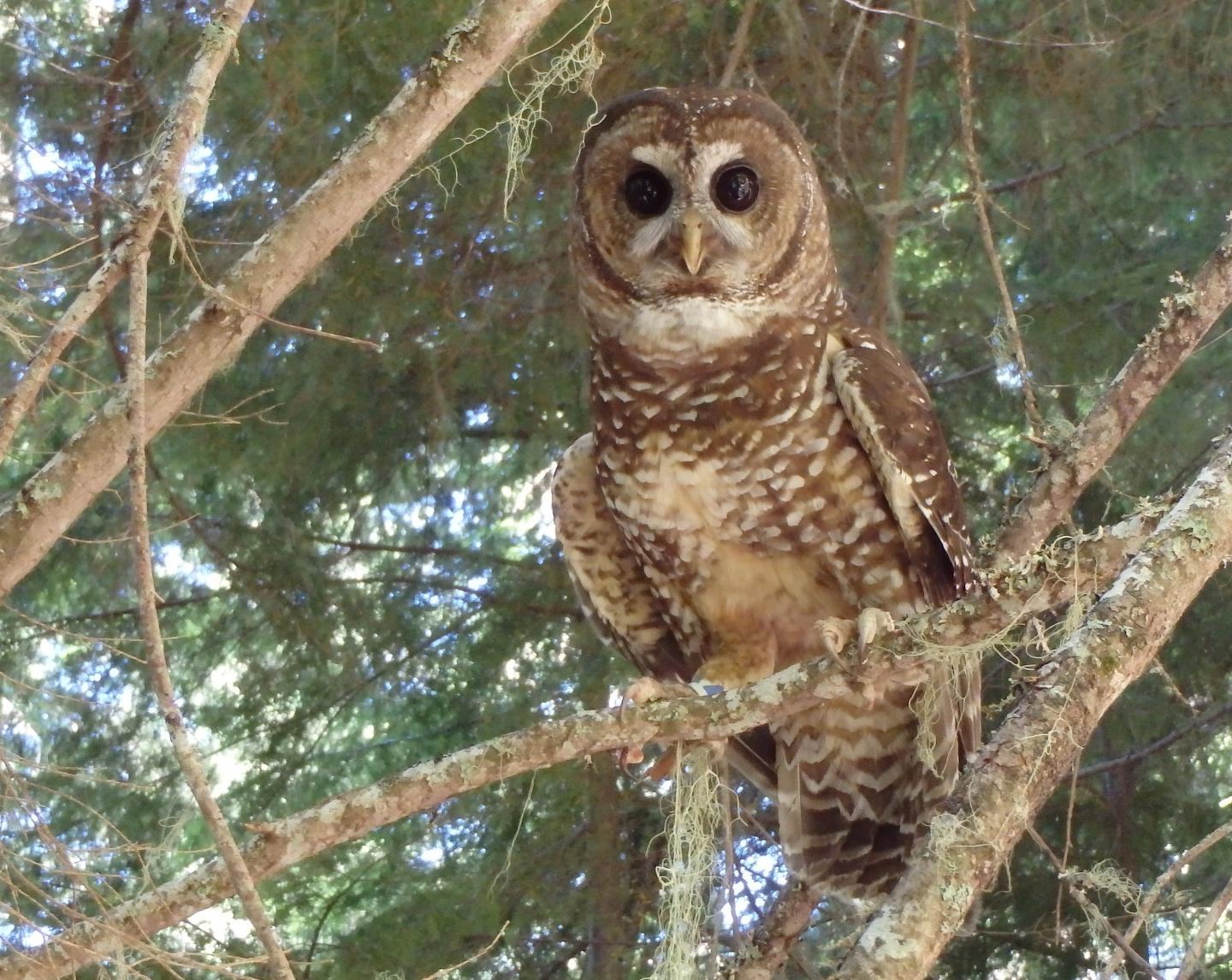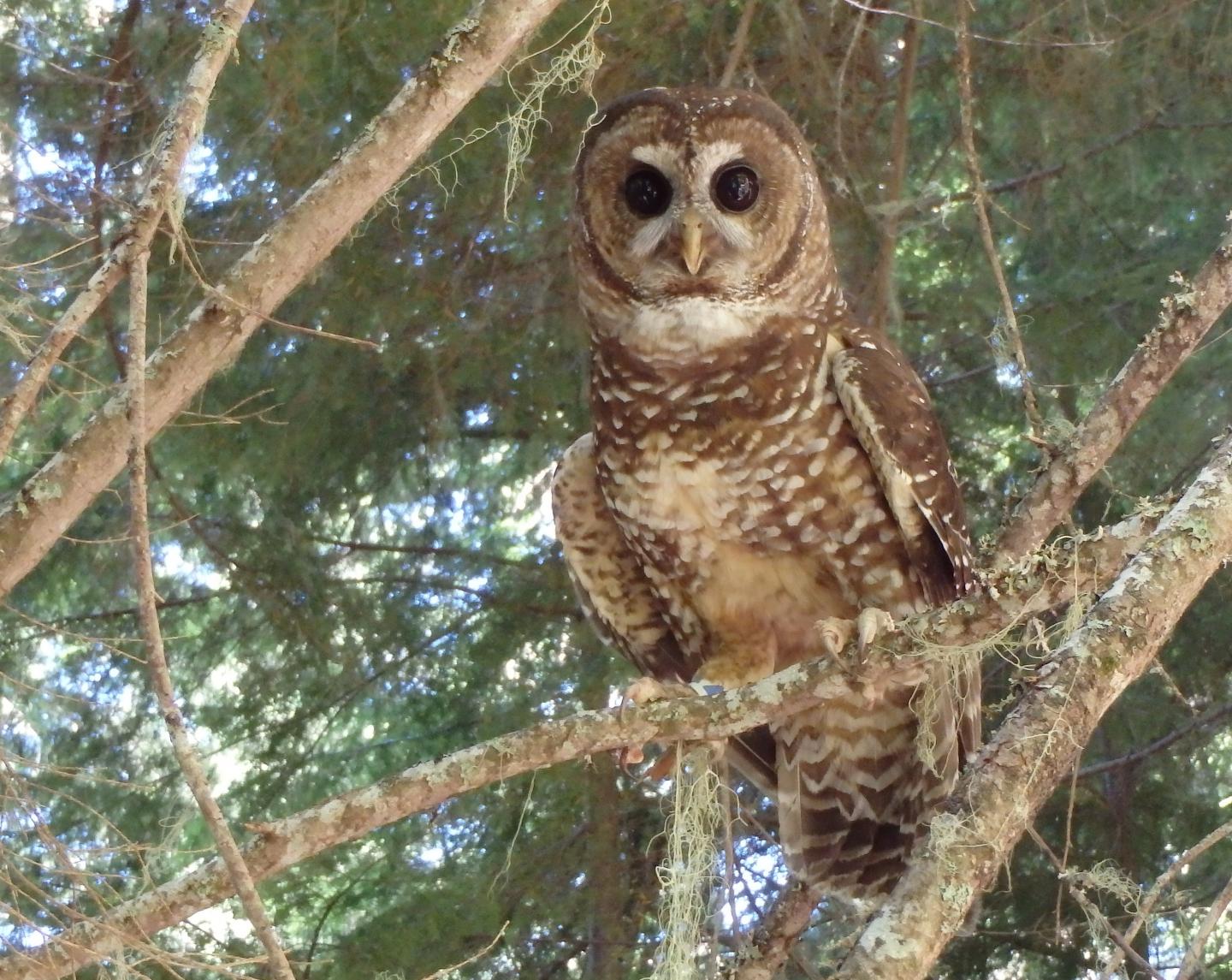
Credit: Photo by Ray Davis
EAST LANSING, Mich. – Barred owls – unrivaled nocturnal predators and procreators – are moving into the Pacific Northwest. They're encroaching on northern spotted owl territories and outcompeting this smaller, threatened cousin.
A model developed at Michigan State University shows how it's happening and gives wildlife conservationists a highly accurate, yet cost-effective tool to help shape management policies.
"Our model estimates population abundance and demographic rates, such as survival and reproduction, from relatively 'cheap' data," said Sam Rossman, postdoctoral researcher with MSU and Hubbs-SeaWorld Research Institute and the paper's lead author. "Typically, estimating these quantities requires intensive sampling efforts involving capturing, marking, releasing animals and then repeatedly tracking and recapturing them at later dates."
The MSU model is featured in the current issue of Ecology and uses data on two simple factors: presence or absence of animals across space and time. While the input may be simple, the model is not. "Dynamic N-occupancy" is capable of providing accurate estimates of local abundance, survival rates and population gains – including reproduction and immigration – while accounting for the fact that the presence of a species may be detected imperfectly during sampling.
"Simply put, the model is telling us the rate at which barred owl numbers are increasing and offering clues as to why that's happening. This, in turn, can help us understand how endangered spotted owl populations in the same region may respond," said Sarah Saunders, MSU postdoctoral researcher and one of the paper's co-authors. "Barred owls are bigger, more aggressive, maintain a smaller territory, produce more young and are even outcompeting spotted owls in old-growth forests, what was once thought to be spotted owl strongholds."
This paper adds to our understanding of barred owl demographic rates and their growth over space and time. The team's analysis revealed consistently high survival rates and a strong positive relationship between regional population abundance and local-level reproduction and immigration, which has led to dramatically increasing barred owl numbers within the study area.
Barred owls' arrival in Oregon has been pronounced. However, the team found that their population growth within the study area has slowed over the last five years. This potentially indicates that population is approaching saturation.
The team used 26 years worth of data collected by U.S. Forest Service researchers. In a direct comparison of survival estimates, the team's results were consistent with those from a nearby radio-tracking study, using data that were much more expensive and labor intensive to collect.
Dynamic N-occupancy's speed, accuracy and affordability, as well as its capacity to involve citizen scientists in the process, have the research team excited about its potential and myriad applications. The model can work from everything from estimating monarch populations to helping better understand bird populations based on Audobon's Christmas Bird Count. It can work especially well on tracking the increase of invasive species or the decrease of endangered species, said Elise Zipkin, MSU integrative biologist and one of the paper's co-authors.
"We've developed a crucial tool in helping explain why populations are changing and at what costs," she said. "We are like wildlife detectives. People come to us when they can't solve their mysteries. We're able to quickly sift through extensive data sets, involve citizen scientists in data collection, and help them solve their problems."
###
Additional contributors to the study include scientists from U.S. Geological Survey and the U.S. Forest Service.
Michigan State University has been working to advance the common good in uncommon ways for more than 150 years. One of the top research universities in the world, MSU focuses its vast resources on creating solutions to some of the world's most pressing challenges, while providing life-changing opportunities to a diverse and inclusive academic community through more than 200 programs of study in 17 degree-granting colleges.
For MSU news on the Web, go to MSUToday. Follow MSU News on Twitter at twitter.com/MSUnews.
Media Contact
Layne Cameron
[email protected]
517-353-8819
@MSUnews
http://msutoday.msu.edu/journalists/
############
Story Source: Materials provided by Scienmag





